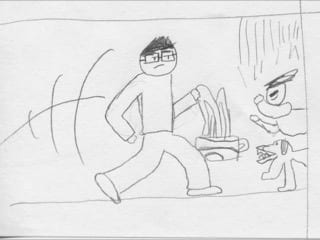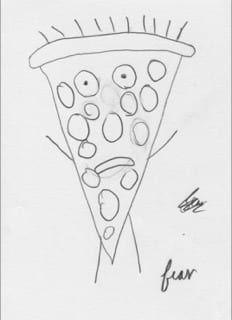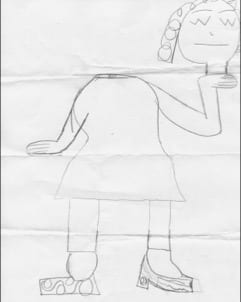
WITS Voices: Getting Around the Real
May 18, 2017
By Kelly Froh, WITS Writer-in-Residence
I had an idea to engage my middle-schoolers with a series of curated exercises that would magically entwine, crossover, and accelerate their understanding of the comics form, and that these students would turn out incredible comic pages for a final printed project.
It did not occur to me that some students didn’t constantly doodle like I did when I was their age, or that they didn’t naturally find joy or release in drawing. Hearing “I can’t draw” from a kid seemed like an oxymoron; how can this be?
Then, I remembered reading that a lot of kids stop drawing around age 9. I figured it was when video games and iPads entered their worlds, but with more research, I learned the many stages of drawing development: from scribbling, to symbols, to figures, to attempts at perspective. But after these stages, when kids develop a “visual awareness” in the world around them, they expect more from their drawings. They expect a level of “realness,” and the pressure to “get it right” rears its ugly head.

As a comics teacher, I needed to counter “I can’t draw.” I saw this pressure to get it right in my students, and the relief when they rejected the white piece of paper in front of them. I couldn’t just say, “try,” or “use your imagination”: that white piece of paper was an ocean, a cliff, a freeway.

I used exercises that encouraged the breaking down of a figure into steps. For our lessons on facial expressions, I encouraged students that felt uneasy about drawing a realistic face to only focus on the angle of eyebrows, the pupils in eyeballs, the mouth shape. It helps that in comics, we can be silly, and exaggeration is part of our language! Instead of an ovular or circular head shape, we drew a piece of pizza (a triangle with a few circles on it).
For body language, we traced figures out of an array of comic and anatomy books. I wanted them to just think of drawing as shapes and lines, instead of “art”. The exercise “Exquisite Corpse” has four students drawing one figure in four parts (on a folded piece of paper), without seeing each others’ section; then, the drawing is unfolded to reveal a character born of the imaginations of the students. These are always hilarious to share. Students who “can’t draw” find themselves being able to draw just the feet, or just the head, or just the legs, because they want to be part of the fun.

I am still learning how to best help build confidence in students. The drawings made by students during my recent residency bring me so much joy because of their imperfection, because you see risk-taking, you see hesitancy, but ultimately the resignation it takes to just have fun with it.
 Kelly Froh has self-published over 60 mini-comics and zines, and her comics have appeared in the Seattle Weekly, Poetry Northwest, and the Women’s Review of Books. Kelly has performed her comic stories at the Hugo House’s acclaimed Literary Series, Gridlords, Lit Crawl, Pecha Kucha, On the Boards, APRIL, Spark Central, and at Bumbershoot. Kelly is also the co-founder and Executive Director of Short Run Comix & Arts Festival.
Kelly Froh has self-published over 60 mini-comics and zines, and her comics have appeared in the Seattle Weekly, Poetry Northwest, and the Women’s Review of Books. Kelly has performed her comic stories at the Hugo House’s acclaimed Literary Series, Gridlords, Lit Crawl, Pecha Kucha, On the Boards, APRIL, Spark Central, and at Bumbershoot. Kelly is also the co-founder and Executive Director of Short Run Comix & Arts Festival.